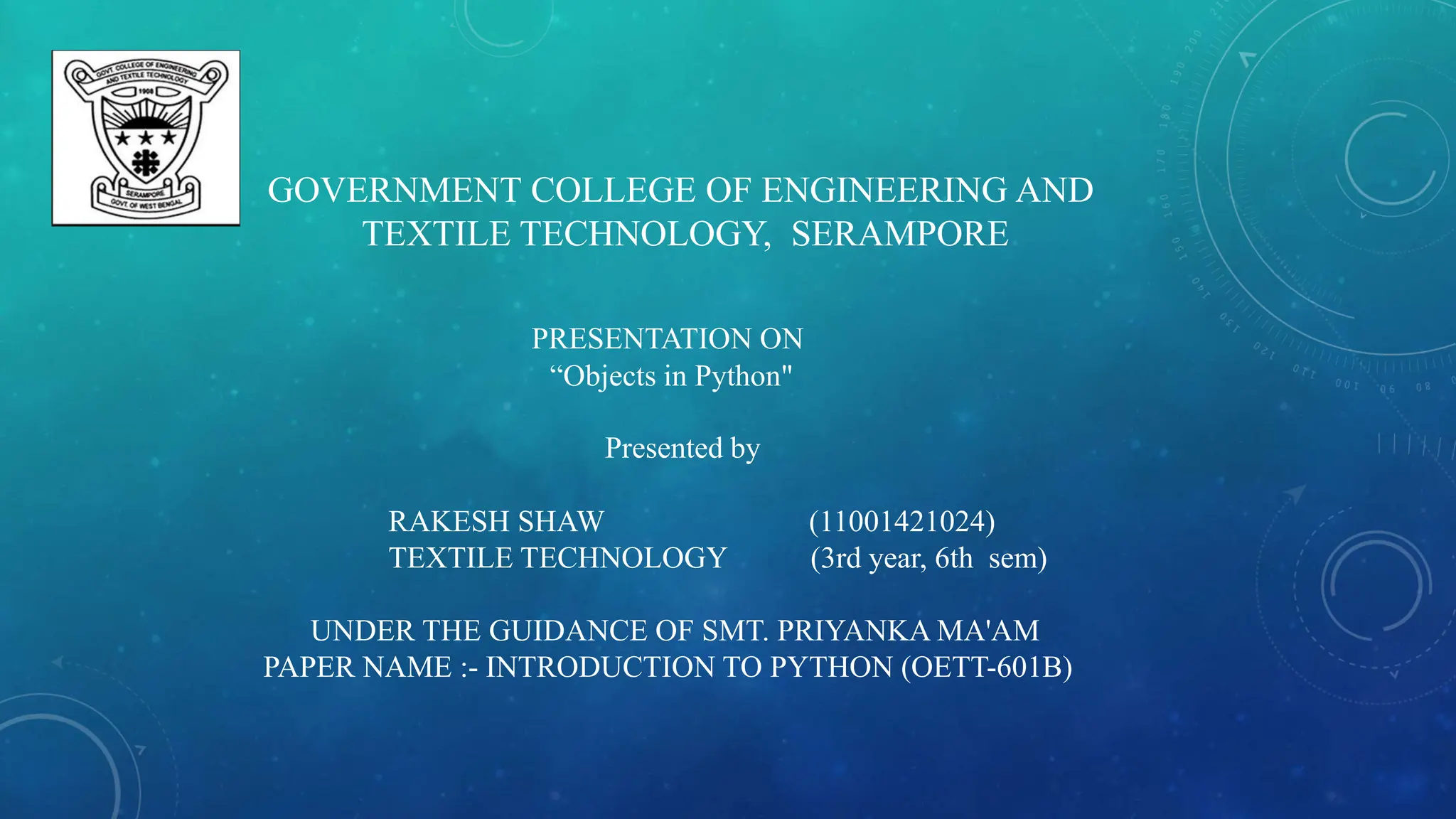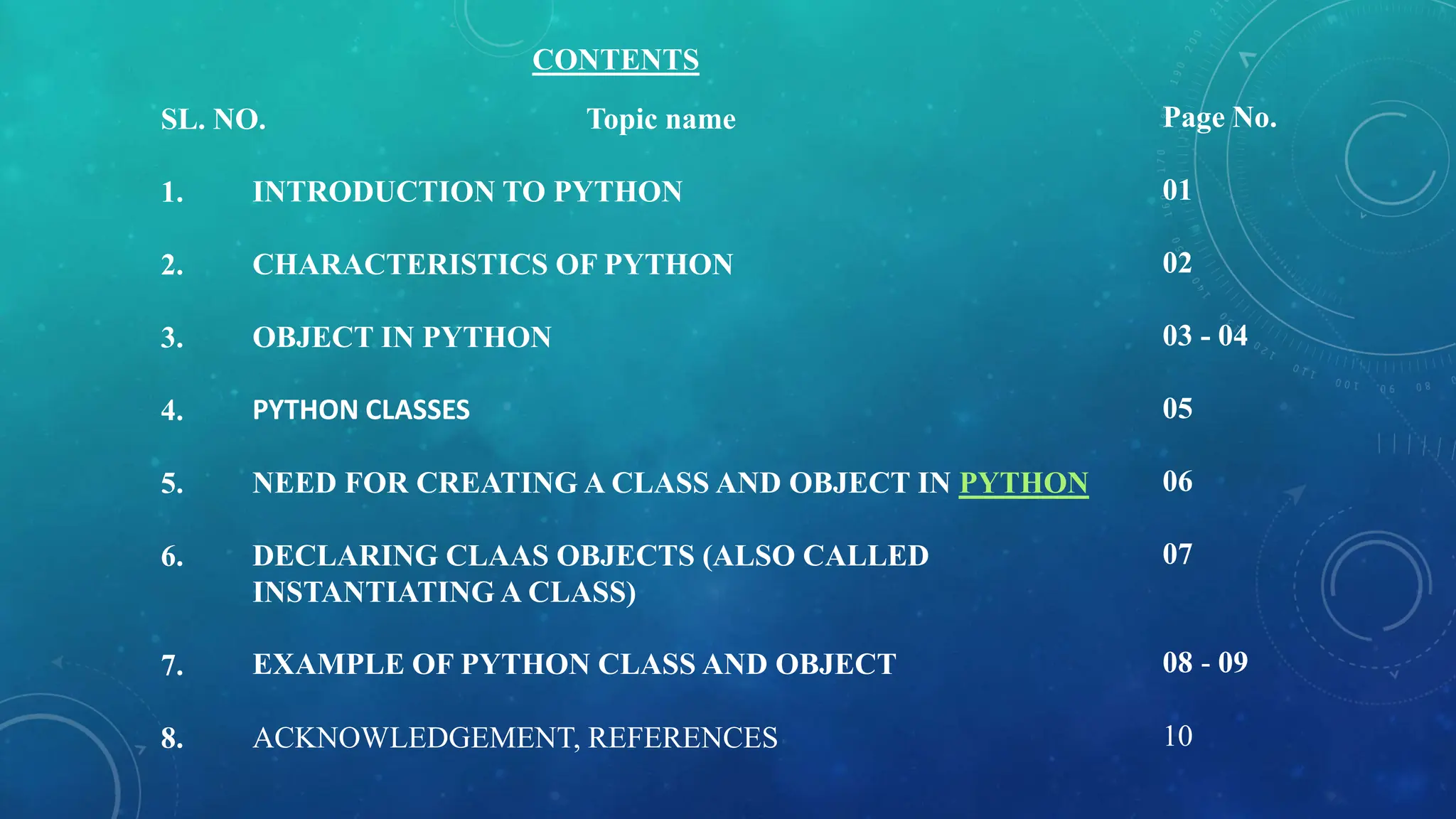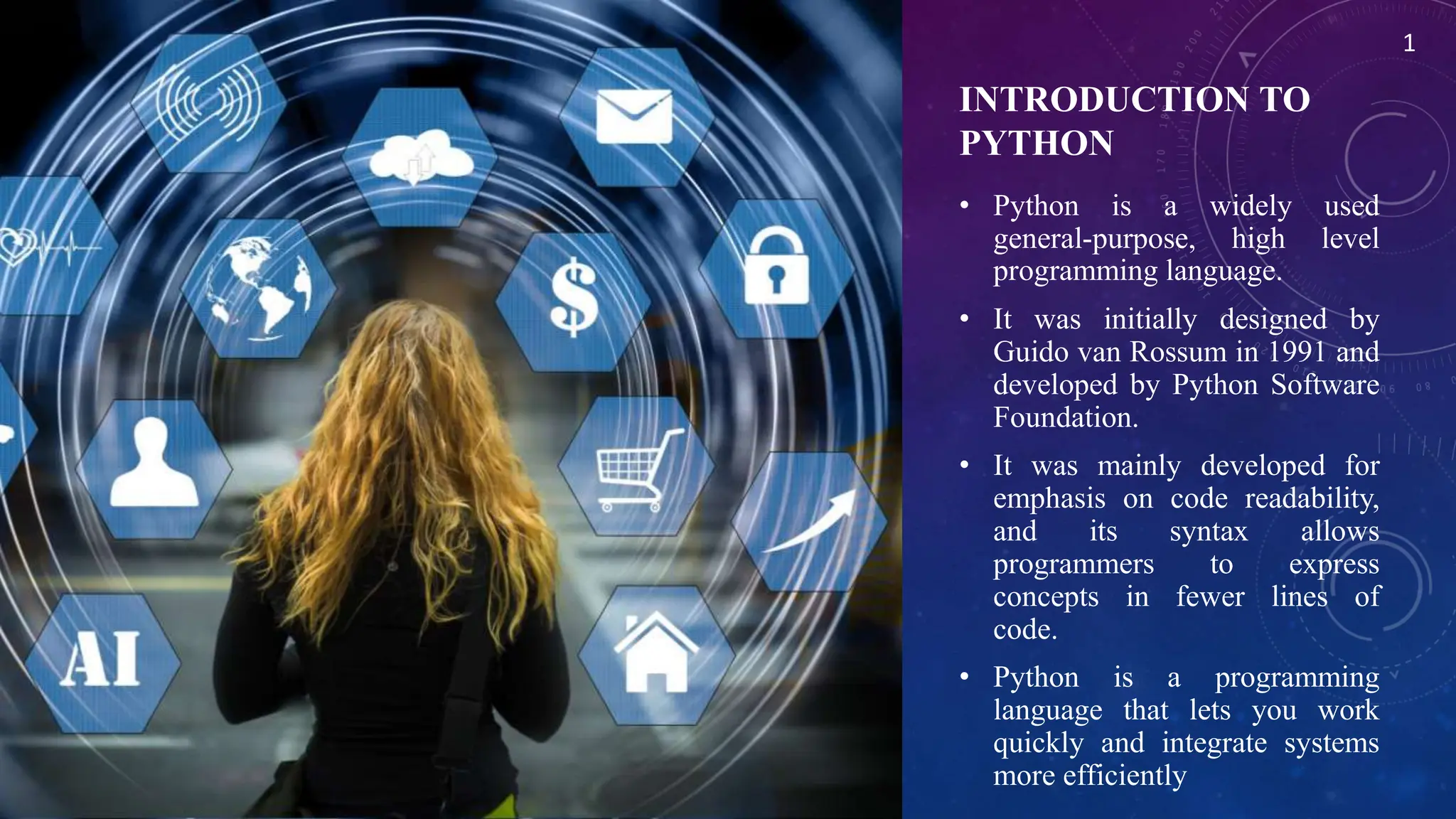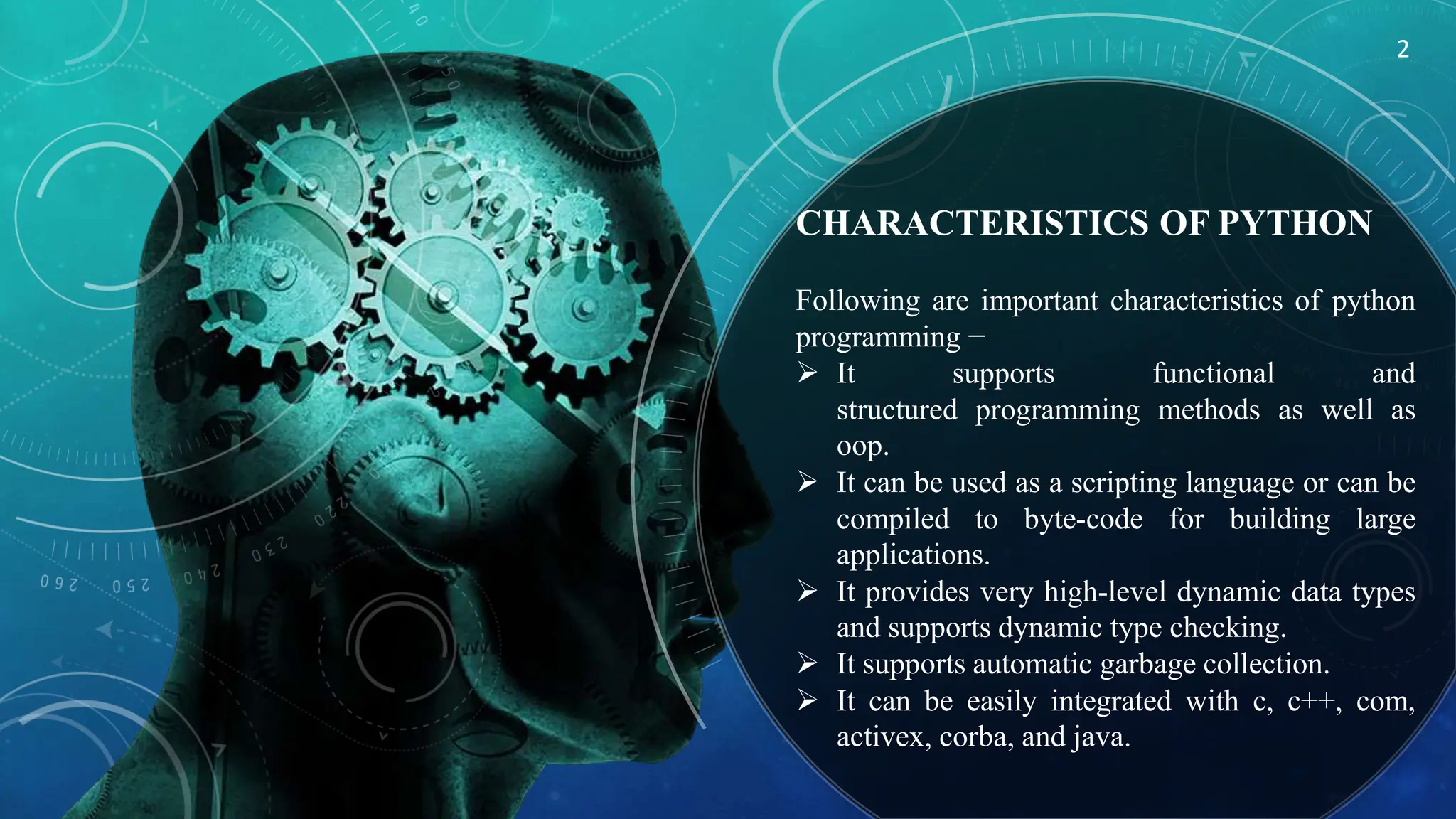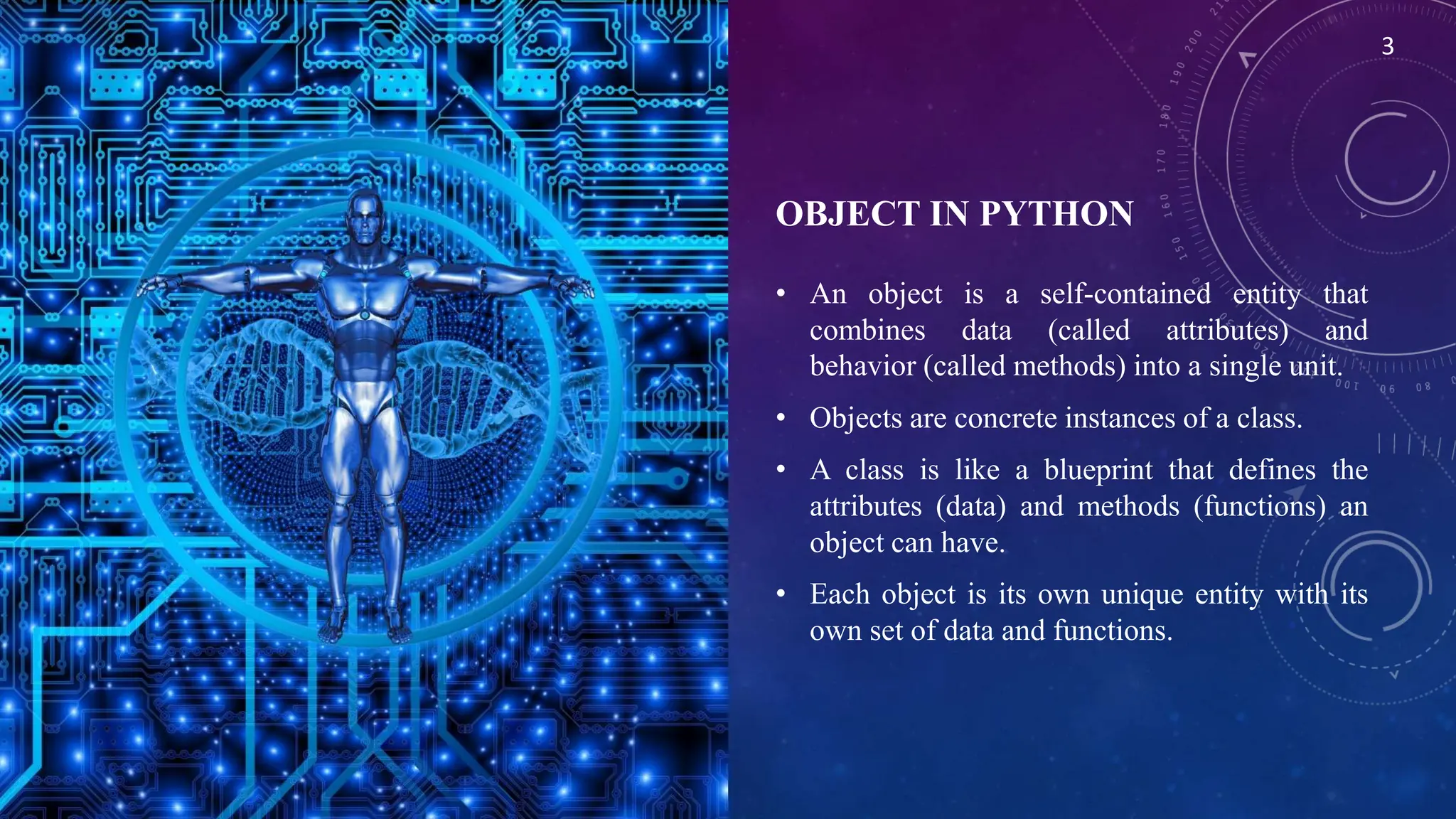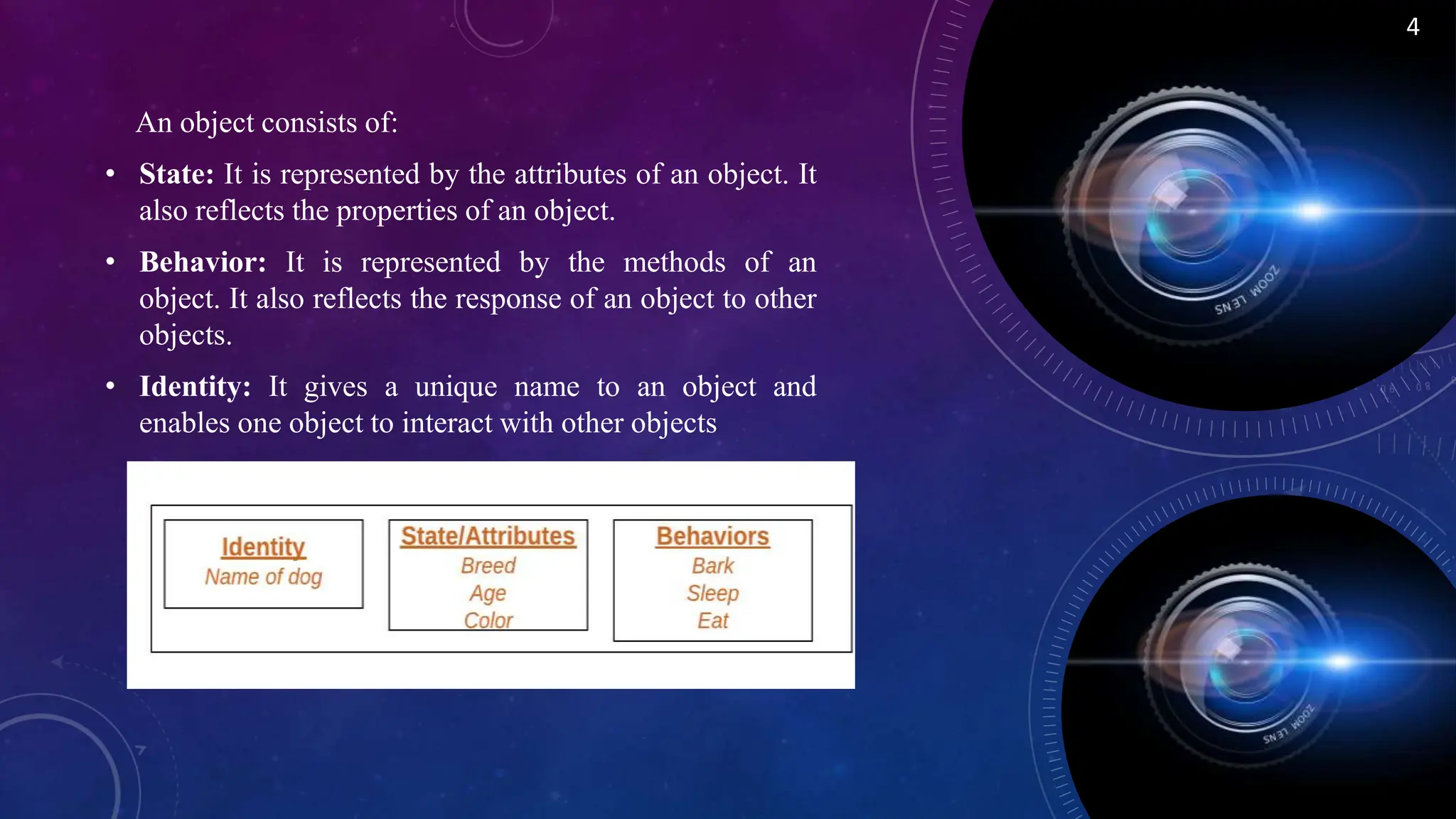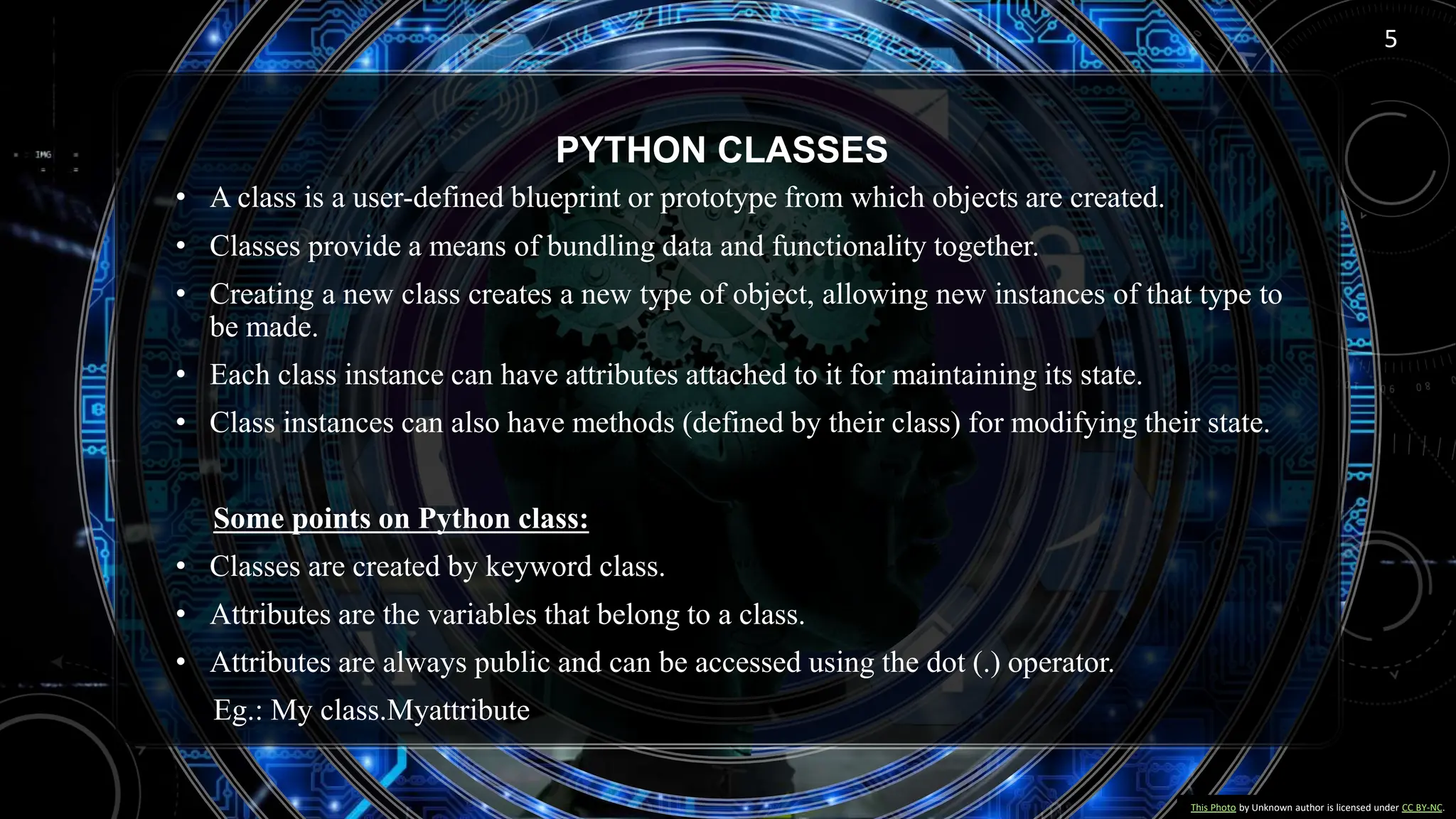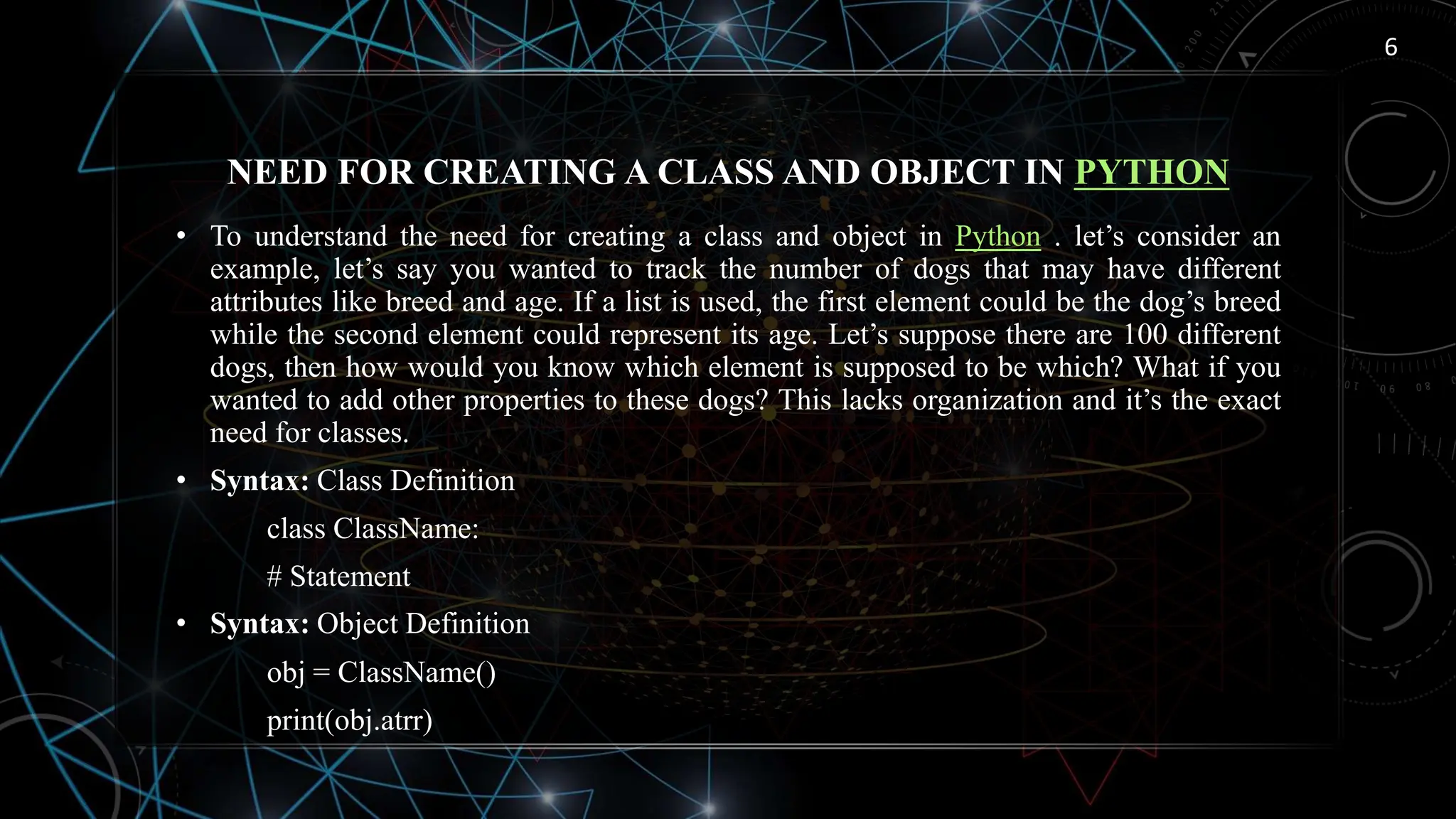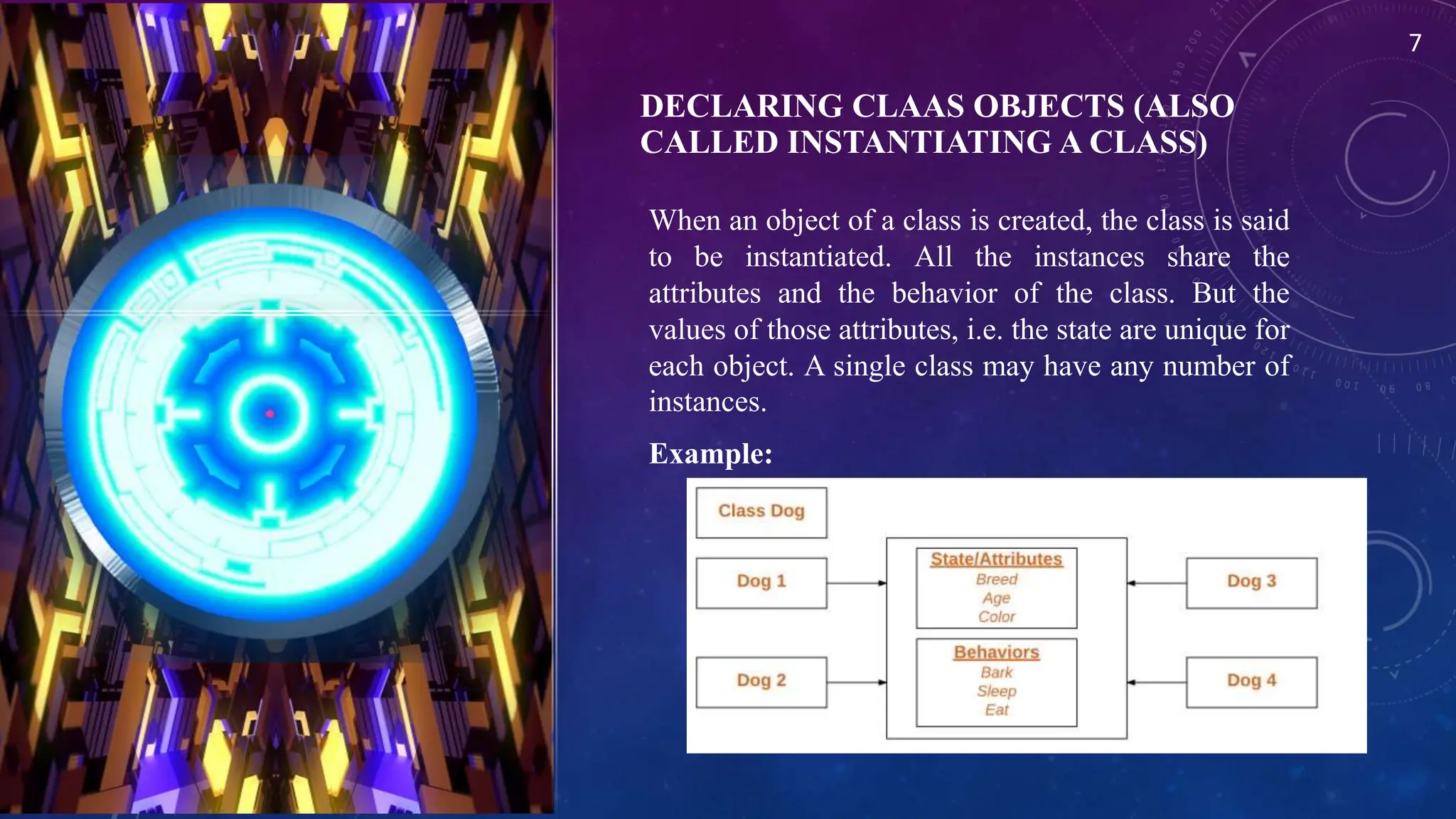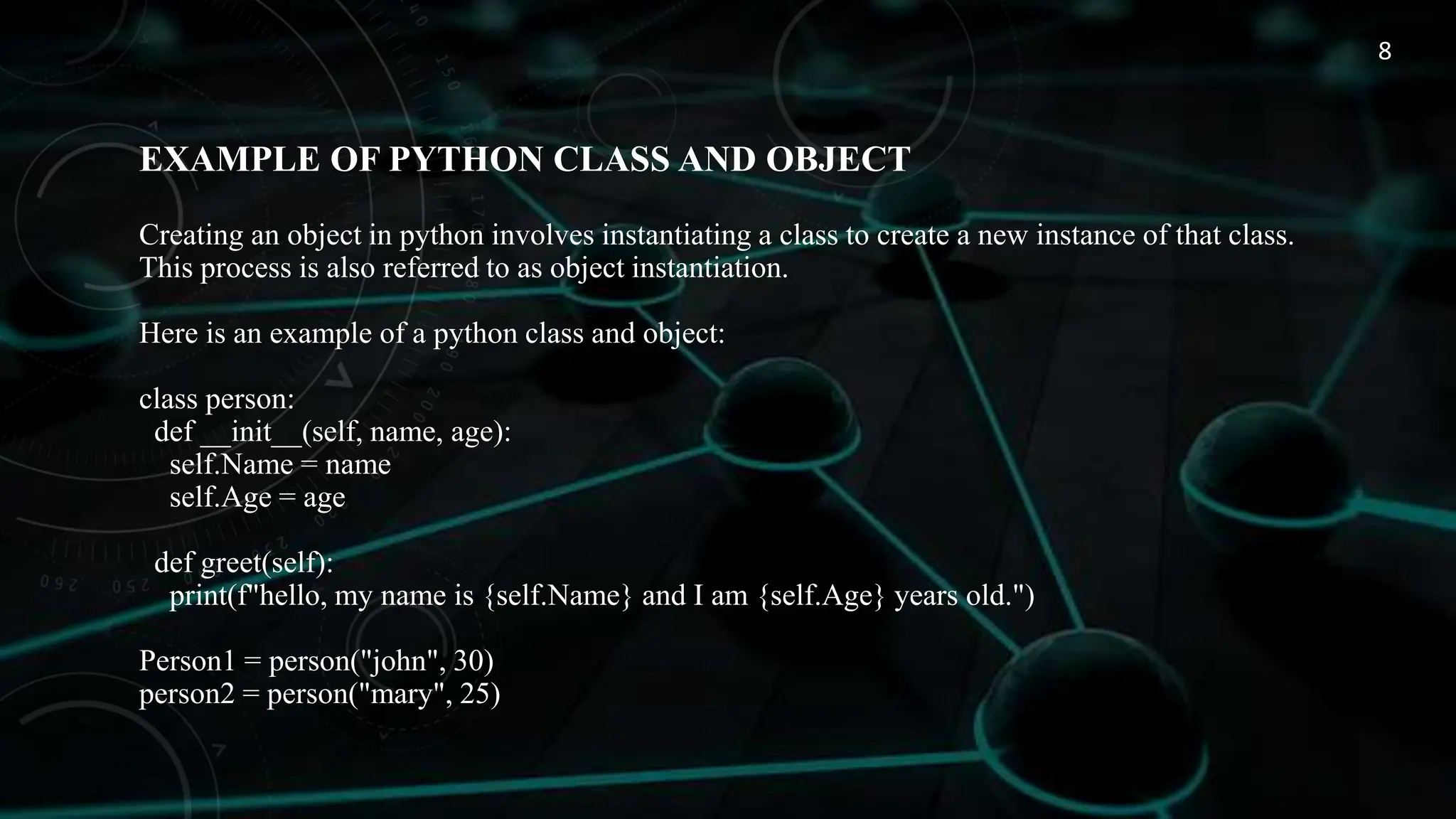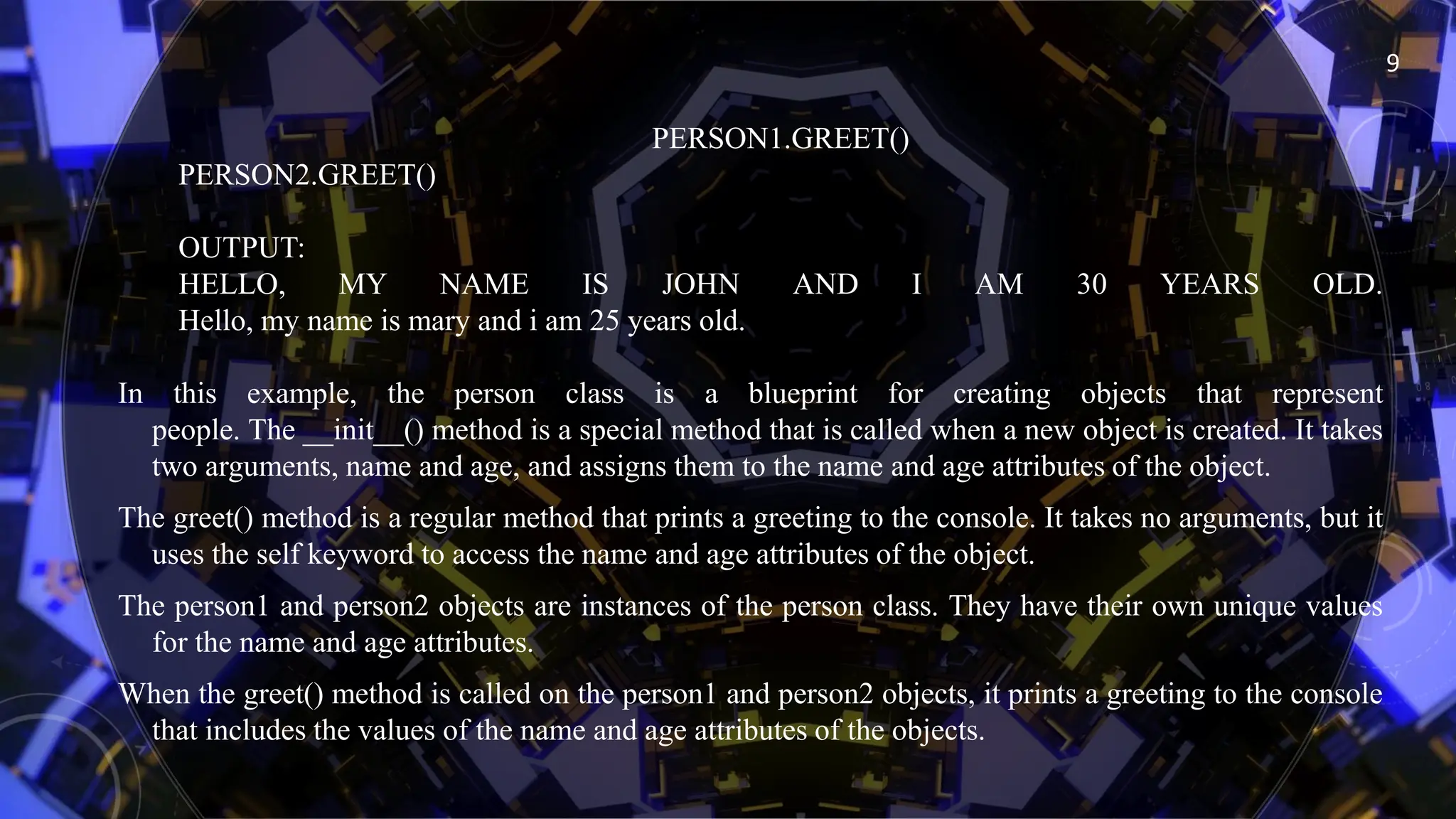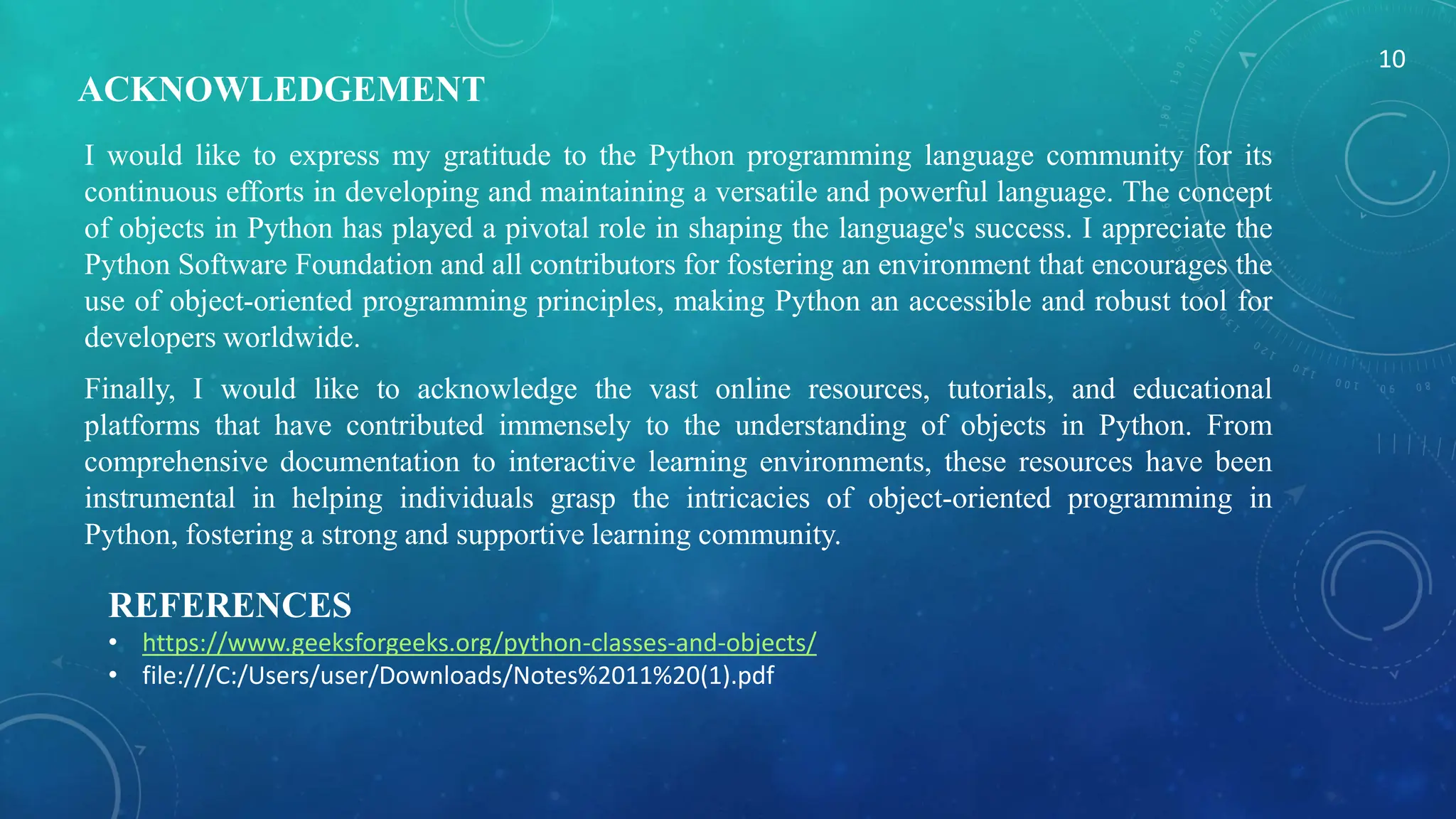This document presents an overview of objects in Python. It defines what objects and classes are, explaining that objects are instances of classes that combine data and methods. It provides examples of defining a class called Person with name and age attributes and a greet method. It then instantiates Person objects called person1 and person2, demonstrating how they have unique attribute values but share the class's methods. The document concludes by acknowledging the Python community and citing references used.
